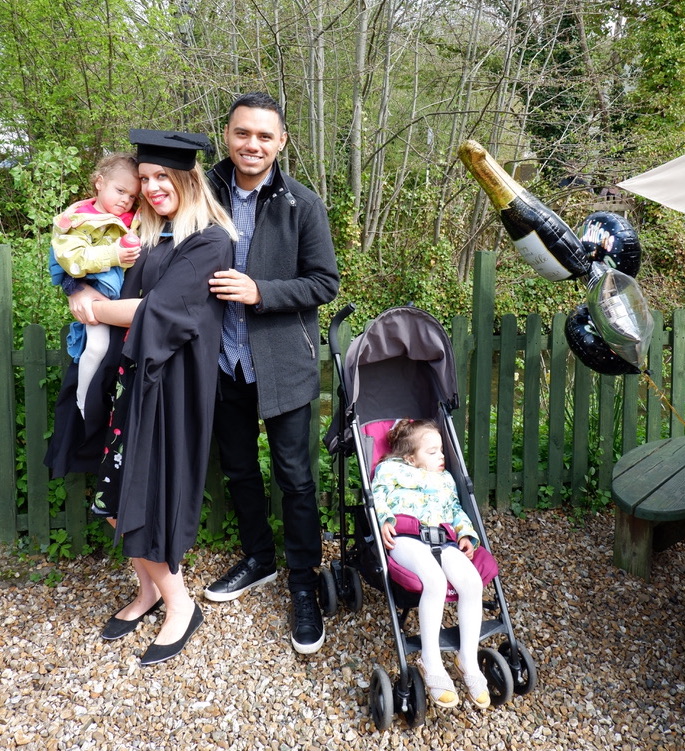Ella Michalski graduated this month with an LLB Law degree after becoming pregnant with twins during her degree and her daughters experiencing many health complications. Ella persevered with her degree throughout this traumatic time, even studying from hospital. This is her #BBKgrad story.
I spent my teenage years in the care system with a local authority. When I entered my early twenties I was desperate to travel, so I used my savings from various hospitality and retail jobs I’d had to travel around the world. I returned from travelling aged 25. I had an amazing few years but I was ready to return to normality again and wanted to settle in one place.
My late twenties soon came around and I decided I wanted to enter higher education to pave and develop my career, but I wanted to find a way of studying that meant I could keep my daytime commitment of working in retail. I knew I wanted to study law, with criminal justice being a huge interest of mine.
I came across Birkbeck after friends recommended it to me – studying in the evenings provided the perfect solution. I signed up for a Birkbeck open day, and after attending I just knew Birkbeck was where I wanted to go. It had a real feel, straightaway, of a strong student community. Despite having no previous legal experience, I took a deep breath and enrolled onto the LLB Law degree.
A year into my degree, when I was aged 29, I became pregnant. Unfortunately, I experienced numerous complications during my pregnancy, and at 12 weeks into my pregnancy I was told with near-certainty I would lose my twins. I spent 14 weeks on bedrest in hospital. The Wellbeing Team at Birkbeck were so supportive with finding me alternative ways to study in hospital, and despite being in such a traumatic situation, studying really helped give me escapism from my difficult reality at that time.
When I gave birth, my twins were born with chronic lung disease. They spent three months in intensive care, with multiple medical difficulties whilst they were there. I spent my days visiting the hospital in the day and studying in the evening. Knowing that I could tell my daughters about how I studied for a degree kept me going as I knew how proud of me they’d be one day.
When my daughters were finally discharged from hospital, they were on oxygen 24-hours-a-day for a whole year. Despite their severe health needs during this time, I continued with my degree. It was certainly hard but Birkbeck ensured I had the support in place, and with my strong network of family and friends I was able to persevere and eventually complete my degree.
Reflecting on my Birkbeck experience as a whole, it’s provided me with skills that I didn’t even know existed and given me so much more than I ever anticipated. The skills I’ve gained will stay with me forever and go far beyond just academic skills. My degree has propelled my confidence – it’s made me believe in myself a million more times more than I ever thought possible. When I was able to attend lectures in person, I found the teaching incredible. The lectures were always so informative and inclusive with students in the room, and questions were really encouraged. I’d describe the learning experience at Birkbeck as gentle and encouraging. I particularly enjoyed group work – I found it brought people together and the Library facilities were brilliant as we could book group areas easily to work together.
Thankfully, my daughters are now well and thriving. In the future, I plan to pursue a career in criminal justice. I’m hoping to volunteer for the Innocence Project soon, which aims to free innocent people from incarceration. I also enjoy being an ambassador for the Rainbow Trust Children’s Charity, which provided invaluable support for my family and I through our challenging times.
I’d 100% recommend studying at Birkbeck to anyone – the level of education, flexibility and support I received was second to none.
Further Information

